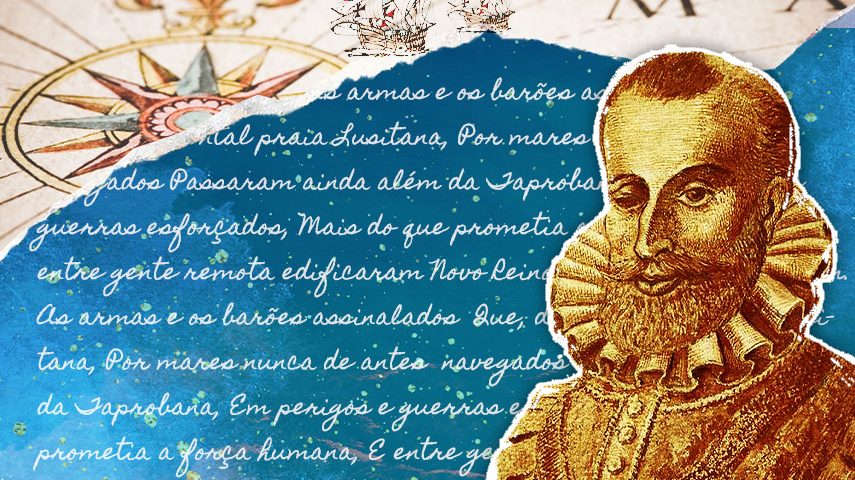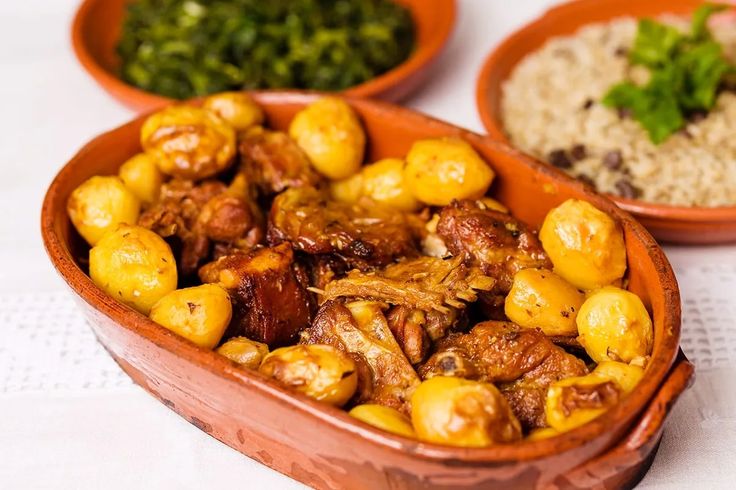Travel diary
Pâques au Portugal
Cette année, je vais passer Pâques au Portugal et cela n’est pas arrivé depuis longtemps ! Du coup, je me suis demandé, grande gourmande que je suis, ce qu’on allait bien pouvoir manger à Pâques ? En France, chez maman, on n’aurait pas échappé au gigot d’agneau bien tendre avec les pommes de terre cuites au four et les flageolets, que j’adore ! Mais au Portugal, qu’en sera-t-il ? Comme vous devez déjà le savoir, les vrais Portugais aiment bien manger, quelle que soit l'occasion, et Pâques ne fait pas exception. La viande est très présente sur les tables de Pâques portugaises avec des mets tels que le chevreau rôti (« cabrito » … miam, miam), l’agneau rôti ou encore le cochon de lait. Dans la région du Minho, dont je suis originaire, les traditions perdurent et comme quand j’étais enfant, le prêtre local continue de se rendre de maison en maison, portant la Sainte-croix et offrant des bénédictions. Les habitants préparent des plats traditionnels pour recevoir le prêtre : des « bolas recheadas » (une sorte de pâte à tarte salée fourrée à la viande et à la saucisse), de l’agneau rôti et du traditionnel « folar », un pain jaune sucré. Vous pouvez également essayer des « broinhas » (petits pains sucrés préparés avec du potiron ou des pommes de terre et fourrés aux raisins secs), du « pão-de-ló » (l'un des plus célèbres gâteaux portugais à base de jaunes d'œufs, d'œufs entiers, de farine et de sucre), ou « bolo de Margarida », comme on le connaît à Felgueiras et « borrachos » (petites pâtisseries frites à base d'œufs, de sucre, de chapelure et de cannelle élaborées à Valença do Minho). Bon, avec tout çà, je sais que je ne vais pas mourir de faim et que je peux tout de suite démarrer un petit régime, en prévision du repas de Pâques !
Learn moreEscapade gourmande à Evora
Si vous êtes de passage à Évora, ne manquez pas l'occasion de découvrir l'Enoteca Cartuxa. Que ce soit pour une dégustation de vins, un repas entre amis ou pour repartir avec quelques produits régionaux d'exception, cet espace vous offrira une jolie expérience sensorielle. L’harmonie entre les vins d'Adega Cartuxa et la cuisine de la région, ajoutée à l'atmosphère chaleureuse du lieu, fait de l'Enoteca Cartuxa un incontournable de la ville. C’est ma deuxième visite à quatre ans d’intervalle et je n’ai pas été déçue en y retournant, bien au contraire ! J’aime le mélange de tradition et d'innovation dans les recettes, qui m’ont séduit par leur simplicité et leur raffinement. A l’Enoteca Cartuxa, vous trouverez aussi une sélection de produits gastronomiques typiques de l'Alentejo : des fromages savoureux, du miel, des saucisses artisanales, des herbes aromatiques, ainsi que les vins et l'huile d'olive produits par la Fondation Eugénio de Almeida. Le domaine viticole Cartuxa est reconnu pour ses vins de qualité, et ici, vous pouvez les déguster dans toute leur variété, y compris au verre. Les visiteurs peuvent également se laisser tenter par les huiles d'olive produites au Moulin à huile de Cartuxa, qu'il s'agisse des huiles "EA" ou "Cartuxa", des produits d'une finesse remarquable qui viennent enrichir l'offre de cette Enoteca. L'adresse est simple : Rua de Vasco da Gama, 15 (à deux pas du Templo Romano)
Learn moreEvora, a world heritage site
Évora, a true museum city , stands as a living testimony to more than twenty centuries of history. Capital of the Alentejo province, in the south of Portugal, this city of exceptional architectural richness has survived the ages, leaving in its wake a deep imprint on the country's cultural heritage. Founded in the Celtic era, Évora is distinguished by its unique character and its emblematic monuments, which bear witness to its evolution over the centuries. Under Roman rule, the city became a thriving urban center, as evidenced by the famous Temple of Diana , a majestic ruin that remains one of the symbols of Antiquity. Over time, Évora was able to adapt to the various invasions, from the Visigoths to the Moors, including the Christians, who restored and enriched the city with their heritage. From the 13th century, Évora Cathedral, a masterpiece of medieval architecture, became one of the city's flagship monuments. But it was in the 15th century that Évora truly reached its peak. The city became a regular residence of the kings of Portugal, thus giving rise to an era of great cultural and architectural prosperity. It was during this period that magnificent convents and royal palaces were built, such as the Convent of Santa Clara , the Convent of São Francisco and the Royal Palace of the same name , all emblematic of Portuguese Renaissance architecture. These buildings, both innovative and imbued with the Manueline heritage, had a decisive influence on Portuguese architecture in Brazil , and continue to amaze with their beauty and harmony. In 1553, the University of the Holy Spirit was founded, establishing Évora as the second city of the kingdom, an intellectual center where the Jesuits taught until their expulsion in 1759. This period also saw a boom in patrician houses and new urban projects that further enriched the city, especially with its typical low whitewashed houses , decorated with azulejos and embellished with wrought iron balconies . These constructions, erected between the 16th and 18th centuries, fit perfectly into the narrow and winding urban fabric of the city, recalling the medieval layout while testifying to its development over time. Another striking feature of Évora is its exceptional architectural unity , reinforced by its low impact during the 1755 earthquake that devastated many other cities in Portugal. Today, this coherence between the city's traditional houses and majestic monuments makes Évora a rare example of Portuguese architecture perfectly adapted to its environment and climate. Thus, with its cobbled streets and emblematic monuments , Évora continues to seduce with its authenticity and history, a city where every street corner tells a page of Portuguese history, and where the beauty of its heritage is as timeless as the history that shaped it.
Learn moreMadeira, the pearl of the Atlantic
The name of the island of Madeira comes from the word "madeira" , which means "wood" in Portuguese. This name was given by the Portuguese when they discovered the island in the early 15th century. When they landed on the island, they found that it was covered with dense forests, mainly laurels and other species of precious wood.
Learn moreFunchal, jewel of Madeira
Funchal , the seat of government of the Autonomous Region of Madeira, owes its name to the Portuguese word "funcho" , meaning fennel . When Portuguese navigators, led by João Gonçalves Zarco, arrived on the island of Madeira in 1419, they discovered a large quantity of wild fennel growing on the slopes of the region. Since the colonization of Madeira, Funchal has been chosen as the site of the first permanent settlement on the island, due to its favorable geographical conditions and its natural harbor. The first Portuguese settlers quickly began to develop the area for agriculture, in particular the cultivation of sugar cane, which would become an economic pillar of the island for several centuries, and Madeira wine, which would experience significant development in the 18th century, highly prized by the English. The city of Funchal thus gradually developed around its port, becoming the main urban and commercial center of Madeira. From the 16th century onwards, the city became a major administrative and cultural centre of the Madeira archipelago. The Santa Clara Monastery and the Funchal Cathedral , built at the beginning of the 16th century, were among the first major religious buildings that marked the urbanisation of the city. In the 19th century, with the end of the sugar cane monopoly and the consolidation of the wine industry, the city gradually transformed into a tourist center, particularly with the arrival of wealthy European visitors seeking to take advantage of the island's pleasant climate. Since the early 2000s, tourism has been booming thanks to the modernization of infrastructure, the growing reputation of the island and the ever-pleasant climate. The city has become a fascinating blend of ancient traditions and modernity, offering visitors a unique experience of culture, history and natural beauty.
Learn moreSantana's Comforting Soup
There Santana's Soup is a traditional soup from the island of Madeira , particularly associated with the region of Santana , a village located in the mountains and famous for its traditional triangle-shaped houses (built from thatch). This dish is typical of rustic Madeiran cuisine, and is appreciated for its richness, simplicity and is often associated with the conviviality of family meals.
Learn moreThe "braguinha", ancestor of the ukulele and cousin of the "cavaquinho"
The braguinha (or four-string braguinha ) is a traditional musical instrument from the island of Madeira . It belongs to the family of plucked string instruments and is similar to the mandolin or cavaquinho , the latter being more widely known in Portugal and Brazil.
Learn more“Casas de Colmo”, architectural heritage of Madeira
The "Casas de Colmo", or thatched houses, are a true symbol of the Santana region of Madeira Island. They embody the rural heritage and traditional architecture of the island. These houses, built as early as the 16th century, were typical dwellings of farmers and modest families in the region. Their simple structure (A-shaped) was adapted to the available resources and the island climate. Originally, they were small, with two levels: a ground floor for daily life, composed of two rooms, one of which served as a bedroom, and an attic for storage. Made from rye straw, their sloping roof provided natural insulation against rain and heat. Their colours (white, blue and red) were originally chosen for practical reasons: the availability of natural pigments and the need to maintain the houses with inexpensive materials. Over time, these practical choices evolved into aesthetic and cultural codes. Bright colours became a way to express the joy of living and give these houses a distinct identity. Today, the colours of the “Casas de Colmo” are carefully preserved, as they are a key element of their tourist and heritage charm.
Learn moreMadeira wine, a nectar embodying the unique flavors of the island
The history of Madeira wine is rich and fascinating, combining maritime exploration, innovation and international prestige.
Learn more









